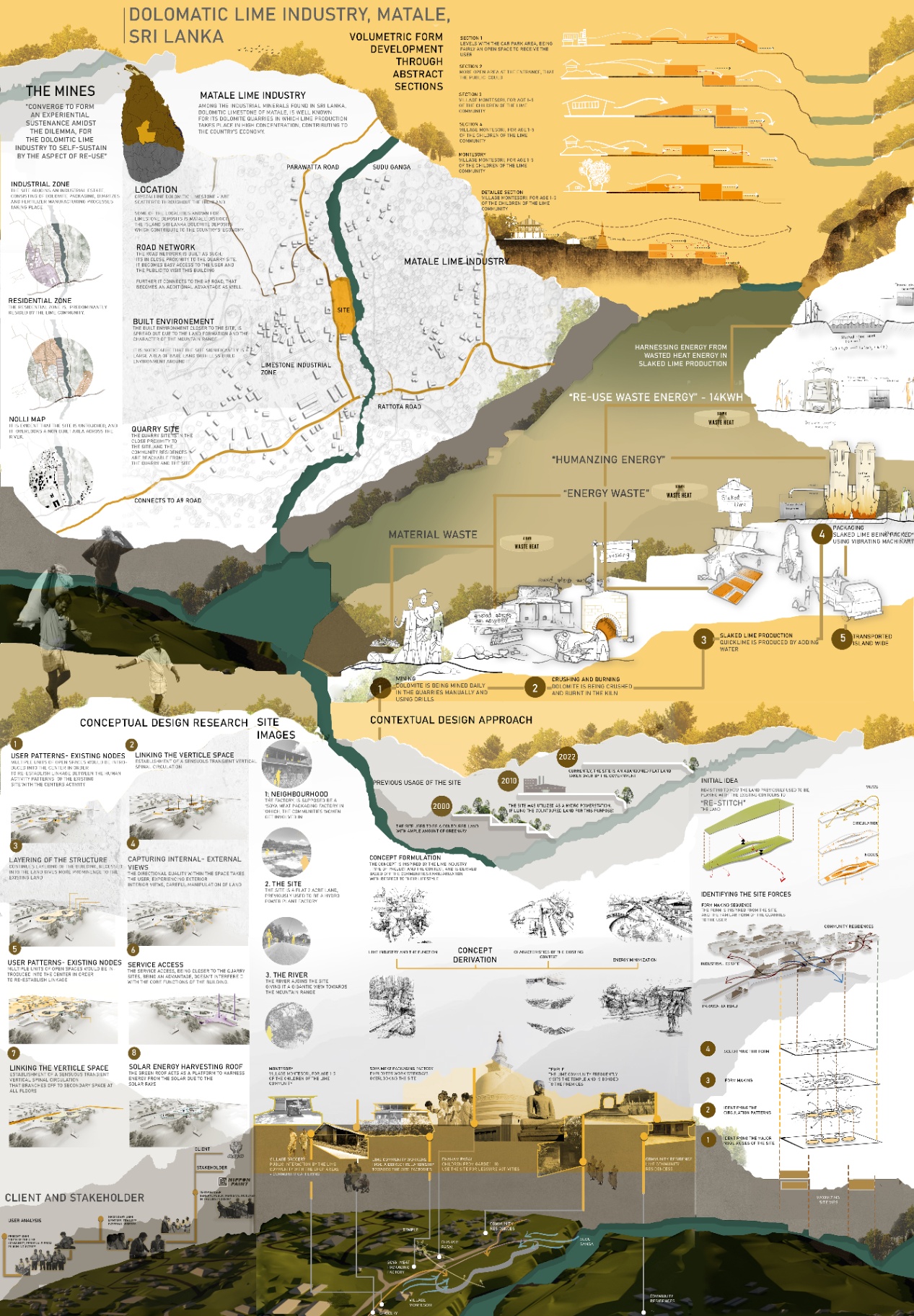Back
Humanising Energy in Crisis - Dolomatic Lime Industry Facilitation Centre, Sri Lanka
Year: 2022
Category: Refurbishment
In all parts of the world, the COVID-19 pandemic has resulted an immediate emergency leading to an economic and energy crisis. None the less, Sri Lanka has experienced this calamity following the worldwide pandemic, causing the income-generating industries to stall.
In the recent years, the Dolomitic limestone mining industry of Sri Lanka has been stagnated, battling against the crisis, that depends on energy. This issue can be resolved by, “Humanizing energy”, in which a concept of adaptive Reuse of wasted energy from the industries process itself can be reused for the betterment of the industry. The project focuses on the concept of “Adaptive Re Use” in terms of the Dolomitic lime industry, energy and context.
The selected site being in the suburbs of Matale, Sri Lanka situated amidst an industrial zone caters to the necessary requirements for this project to take place, being accessible from the quarry sites in the proximity. Thereby the conceptual approach is generated from the major aspects of this project, Functions of the Dolomitic Lime Industry, energy and the context to, "to form an experiential sustenance amidst the dilemma, for the Dolomitic lime industry to self-sustain by the aspect of RE-USE” . The conceptual idea becomes broader and refined when considering the design elements needed to be address the issue. The concept is transformed to the initial design; contextually generated, taking into consideration the existing land formation, and the site forces developing through a series of layering of the land, merging with the contours. The building Envelopes spaces in three levels and enfolding with a walk-able green roof, intending to be a part of the mountain range.
Accordingly, space identification happens considering major elements of the site such as, the node points, circulation patterns, views, layering of the structure, context cover and access points. Inspired by Matale’s building planning methods, playing with secluded spaces such as the sunken courtyard, in which passive ventilation, day lighting methods and views due to the tropical climates and the monsoons, are designed in addition to the human interaction. The design has been analysed in terms energy efficiency and sustainable design approach in the design proposed from inception to the end of 30-year lifespan. The selection of materials are based on the industries material being lime from the quarry sites in the proximity as it possesses low embodied energy and low transportation cost from the quarry sites, while during construction, the community will take part of participatory construction in learning and teaching for a self-sustained industry.
In addition, the design to enhance the site condition and purifying the land and human comfort, where power generating methods, that help mitigate the crisis that the industry upholds. The 30-year lifespan targets the youth to take over the project into multiple regions in the island and when the project deteriorates at the site, to give it back to the nature as a public green area when the context is urbanised, and the base material being lime can be retaken into the quarries.
The project, aims to empower the Dolomitic Lime industry through Humanising energy in the process of their industry, to uplift their living standard giving them avenues to build up to after the major loss that took place after the COVI-19 Pandemic. This project tries to achieve the target to start small scale income generating avenues from waste energy from the Dolomitic lime industry, to be carried out at a community level, through the convergence of what is left behind to create something new, giving hope for the future.
Sanggavi Thomas
More by Sanggavi Thomas
View profile




